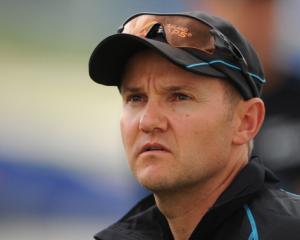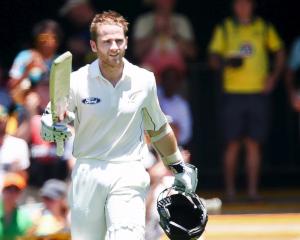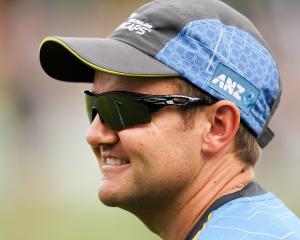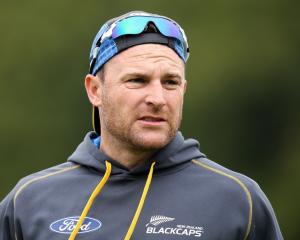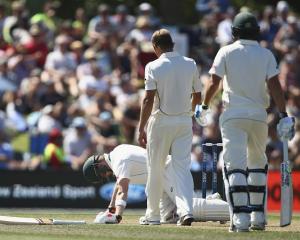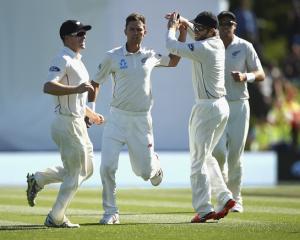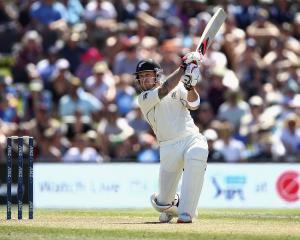England, albeit a revamped outfit to that which New Zealand pulverised at the World Cup, built a performance that left onlookers in a state of disbelief.
With the assistance of poor New Zealand bowling and fielding, England's highest ODI score of 408 for nine was a batting display which whets the appetite for the four remaining matches.
The 210-run win was England's highest in terms of runs, bettering the 202-run record set against India at the 1975 World Cup when Sunil Gavaskar blocked his way to 36 off 174 balls.
The loss is New Zealand's second heaviest by runs, bettered by the 215-run margin against Australia at the 2007 World Cup. It was the most runs New Zealand had conceded in an ODI.
Captain Eoin Morgan said they emulated the visitors' style from the past couple of years.
New Zealand coach Mike Hesson said they couldn't trademark that approach. He identified the adaptation to renewed England pressure as the key area to improve.
"I don't think anyone owns a style, per se. England took advantage of our poor execution and played extremely well.
"Our methods are not necessarily just attack, attack, attack. We have a style we like to stick to, but with the ball yesterday we couldn't execute. This English side are quite attacking. If you bowl poorly, they'll punish you.
"Chasing [more than] 400 with the bat means we had to do things differently. There's no point finishing at 250 for seven, you've got to have a crack. Everything's got to go your way... and more."
Their bowling strategy will be examined.
"We tried to block off parts of the park where we could look to defend but there were too many balls down Main St where you can hit both sides of the wicket. We need to look at our decision-making under pressure.
"We were off in terms of intensity. For a number of our players that's their first ODI in a while so we've got to learn quickly.
"The ball didn't swing, which certainly helps, but I think we gave them too many opportunities to score freely. They took most of them."
All the New Zealand bowlers except Trent Boult (10-0-55-4) conceded more than seven runs per over.
Hesson could see mitigating circumstances for an experienced player like Mitchell McClenaghan who took two for 93 from 10 overs. He had an edge off Joe Root - then on 49 - sail between wicketkeeper and first slip from his third ball.
"Mitch was a bit unlucky in his first spell and that brought frustration and some poor execution. I think he will bowl worse than that and have more flattering figures in the future."
Hesson acknowledged the efforts of debutant Mitchell Santner. He had a steady start with the ball; after three overs his figures were one for 16 before blowing out to one for 64 from eight, but he never feared pitching up. Santner also faced an intimidating time to bat with the required run rate creeping to double figures.
"His first spell under pressure was pretty good. The wicket didn't turn a lot. If it grips he's a different proposition. Turning it gives you more margin for error. He stuck at it well, fielded superbly and showed glimpses with the bat. He'll be better for it."
Corey Anderson's back injury remains a work-in-progress for the second match on Saturday morning (New Zealand time). He could be used solely as a batting option.
Tim Southee is expected to take his place in the starting XI. He was rested after a strenuous test workload.
"He's close, he'll definitely be considered," Hesson said. "We'll just have a look to see how he scrubs up in training."



